| Music Life | ||||
|---|---|---|---|---|
 | ||||
| Studio album by | ||||
| Released | November 5, 2014 | |||
| Genre | ||||
| Label | ||||
| Producer | Glay and Seiji Kameda | |||
| Glay chronology | ||||
| ||||
Music Life is the thirteenth studio album by Japanese pop rock band Glay, released on November 5, 2014.
| Music Life | ||||
|---|---|---|---|---|
 | ||||
| Studio album by | ||||
| Released | November 5, 2014 | |||
| Genre | ||||
| Label | ||||
| Producer | Glay and Seiji Kameda | |||
| Glay chronology | ||||
| ||||
Music Life is the thirteenth studio album by Japanese pop rock band Glay, released on November 5, 2014.
The album was released in three different editions: one regular edition with the 11 new tracks, and two special editions, each containing a second CD, Ballads Best☆Melodies or Ballads Best☆Memories—the latter of which being exclusive to the band's online store, G-Direct—containing previously released ballads by the band. The track list of both compilations was decided by fan votes. [1]
The album reached #2 on the Oricon weekly charts, [2] #5 on their monthly chart for November, [3] and #58 on their 2014 Year-End Chart, [4] as well as reaching #4 on the Billboard Japan Top Albums chart. [5]
The cover art of the album was inspired by The Beatles' Revolver , and was designed by Klaus Voormann, Revolver's cover artist. [1] [6] Commenting on the cover, guitarist and main songwriter Takuro said: [1]
We have walked this 'music life' along with our fans for 20 years since our 1994 major debut. This time we were able to play out our secret dream with all of your help. Klaus Voorman, who has greatly influenced modern art, has created a splendid album cover for Glay’s 20th anniversary album, 'Music Life'. I will never forget how I felt when I saw the first draft. I promise that Glay will continue to work hard in the future. Thank you to Klaus and everybody involved.
The track "Hashire! Mirai" was used as the opening theme of the anime adaptation of Ace of Diamond . [7] The track "Sakurabito", composed by Takuro upon request by the Fukushima Hamakaido Sakura Project, was included as the ending track of both compilations. [1]
All tracks are written by Takuro, except where noted
| No. | Title | Length |
|---|---|---|
| 1. | "Bleeze (album version)" (Teru) | 3:54 |
| 2. | "百花繚乱 (Hyakka Ryoran)" | 3:10 |
| 3. | "Only Yesterday" | 4:45 |
| 4. | "疾走れ!ミライ (Hashire! Mirai)" (Teru) | 4:01 |
| 5. | "祭りのあと (Matsuri no Ato)" | 4:16 |
| 6. | "浮気なKiss Me Girl (Uwaki na Kiss Me Girl)" | 3:11 |
| 7. | "妄想コレクター (Mousou Collector)" (Hisashi) | 5:05 |
| 8. | "Hospital pm9" | 5:20 |
| 9. | "Dark River" | 5:11 |
| 10. | "Till Kingdom Come" | 4:53 |
| 11. | "Music Life" (music by Jiro) | 5:12 |
| Total length: | 48:58 | |
All tracks are written by Takuro (writer of tracks 1, 8 and 12 is unknown)
| No. | Title | Length |
|---|---|---|
| 1. | "つづれ織り〜so far and yet so close〜 (Tsuzureori~so far and yet so close~)" | 5:11 |
| 2. | "Beloved" | 4:45 |
| 3. | "Eternally" | 6:15 |
| 4. | "Pure Soul" | 6:28 |
| 5. | "However" | 5:35 |
| 6. | "都忘れ (Miyako Wasure)" | 5:02 |
| 7. | "Satellite of Love" | 5:31 |
| 8. | "春を愛する人 (Haru wo aisuru hito)" | 5:04 |
| 9. | "ずっと2人で... (Zutto Futari de...)" | 7:08 |
| 10. | "カーテンコール (Curtain Call)" | 5:34 |
| 11. | "Together" | 7:02 |
| 12. | "Let Me Be" | 6:22 |
| 13. | "Sorry Love" | 5:44 |
| 14. | "さくらびと (Sakurabito)" | 2:08 |
All tracks are written by Takuro (writer of track 11 is unknown)
| No. | Title | Length |
|---|---|---|
| 1. | "笑顔の多い日ばかりじゃない (Egao no Ooi hi ga Kari Janai)" | 5:37 |
| 2. | "カナリヤ (Canary)" | 6:52 |
| 3. | "軌跡の果て (Kiseki no Hate)" | 5:34 |
| 4. | "時の雫 (Toki no Shizuku)" | 7:24 |
| 5. | "時計 (Tokei)" | 4:24 |
| 6. | "Hello My Life" | 3:34 |
| 7. | "Precious" | 6:32 |
| 8. | "ホワイトロード (White Road)" | 5:17 |
| 9. | "Mirror" | 5:50 |
| 10. | "May Fair" | 4:58 |
| 11. | "ゆるぎない者達 (Yuruginai Monotachi)" | 5:10 |
| 12. | "Rosy" | 4:35 |
| 13. | "さくらびと (Sakurabito)" | 2:08 |
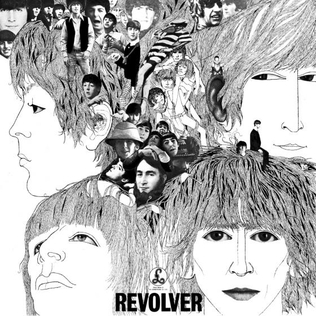
Revolver is the seventh studio album by the English rock band the Beatles. It was released on 5 August 1966, accompanied by the double A-side single "Eleanor Rigby" / "Yellow Submarine". The album was the Beatles' final recording project before their retirement as live performers and marked the group's most overt use of studio technology to date, building on the advances of their late 1965 release Rubber Soul. It has since become regarded as one of the greatest and most innovative albums in the history of popular music, with recognition centred on its range of musical styles, diverse sounds and lyrical content.

1 is a greatest hits album of the English rock band the Beatles, originally released on 13 November 2000. The album features virtually every number-one single the band achieved in the United Kingdom or United States from 1962 to 1970. Issued on the 30th anniversary of the band's break-up, it was their first compilation album available on only one CD. 1 was a commercial success and topped charts worldwide. It has sold over 31 million copies. Since Nielsen SoundScan began tracking US album sales in January 1991, 1 is the fourth-best-selling album in the US, the best-selling album of the 2000s decade in the US, as well as the best-selling album of the decade worldwide.

Klaus Otto Wilhelm Voormann is a German artist, musician, and record producer.

Glay is a Japanese rock band formed in Hakodate in 1988. The core four members, vocalist Teru, guitarists Takuro and Hisashi, and bassist Jiro, have been together since 1992. Primarily composing songs in the rock and pop genres, they have also arranged songs using elements from a variety of other genres, including progressive rock, punk, gothic rock, electronic, R&B, folk, gospel, reggae, and ska. Originally a visual kei band, the group slowly shifted to less dramatic attire through the years. With five million copies sold, Glay's 1997 compilation album Review is the fifth best-selling album of all time in Japan. Their July 1999 concert "Expo '99" at Makuhari Messe was attended by 200,000 people, making it the largest-ticketed concert ever held by a single act at the time. As of 2008, Glay had sold an estimated 51 million records; 28 million singles and 23 million albums, making them one of the top ten best-selling artists of all time in Japan.

1962–1966, also known as the Red Album, is a compilation album of songs by the English rock band the Beatles, spanning the years indicated in the title. Released with its counterpart 1967–1970 in 1973, the double LP peaked at number 3 in the United Kingdom. In the United States, it topped the Cash Box albums chart and peaked at number 3 on the Billboard Top LPs & Tape chart while 1967–1970 reached the top spot. The album was re-released in September 1993 on compact disc, charting at number 3 in the UK.
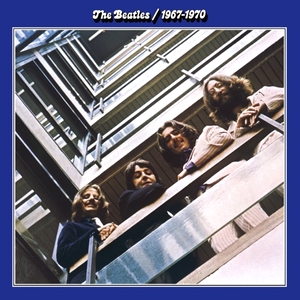
1967–1970, also known as the Blue Album, is a compilation album of songs by the English rock band the Beatles, spanning the years indicated in the title. A double LP, it was released with 1962–1966 in April 1973. 1967–1970 topped the Billboard albums chart in the United States and peaked at number 2 on the UK Albums Chart. It was re-released in September 1993 on CD, charting at number 4 in the United Kingdom.

Anthology 1 is a compilation album of music by the Beatles, released on 20 November 1995 by Apple Records as part of The Beatles Anthology series. It features rarities, outtakes and live performances from the period 1958–64, including songs with original bass player Stuart Sutcliffe and drummer Pete Best. It is the first in a trilogy of albums with Anthology 2 and Anthology 3, all of which tie in with the televised special The Beatles Anthology. It contains "Free as a Bird", the first new Beatles song in 25 years, which was released as a single two weeks after Anthology 1.
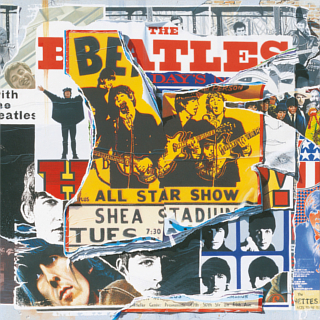
Anthology 2 is a compilation album by the Beatles, released on 18 March 1996 by Apple Records as part of The Beatles Anthology series. It features rarities, outtakes and live performances from the 1965 sessions for Help! until the sessions immediately prior to their trip to India in February 1968. It is the second in a trilogy of albums with Anthology 1 and Anthology 3, all of which tie in with the televised special The Beatles Anthology. The opening track is "Real Love", the second of the two recordings that reunited the Beatles for the first time since the band's break-up. Like its predecessor, the album topped the Billboard 200 album chart and has been certified 4× Platinum by the RIAA.

Anthology 3 is a compilation album by the Beatles, released on 28 October 1996 by Apple Records as part of The Beatles Anthology series. The album includes rarities and alternative tracks from the final two years of the band's career, ranging from the initial sessions for The Beatles to the last sessions for Let It Be and Abbey Road in 1969 and early 1970. It is the last in a trilogy of albums with Anthology 1 and Anthology 2, all of which tie in with the televised special The Beatles Anthology.

Mika Nakashima is a Japanese singer and actress. Five of her studio albums, one of her mini-albums and one of her compilation albums have reached number one in Japan's Oricon album chart. She also embarked on an acting career, most notably as Nana Osaki in the live action film adaptations of Nana. She has sold over 10 million records in Japan.

"When We Was Fab" is a song by English musician George Harrison, which he released on his 1987 album Cloud Nine. It was also issued as the second single from the album, in January 1988. The lyrics serve as a nostalgic reflection by Harrison on the days of Beatlemania during the 1960s, when the Beatles were first referred to as "the Fab Four". Harrison co-wrote the song with Jeff Lynne, who also co-produced the track. The recording references the psychedelic sound that the Beatles had helped popularise in 1967, through its use of sitar, cello, and backwards-relayed effects. Harrison's former Beatles bandmate Ringo Starr is among the other musicians on the track. The single was accompanied by an innovative music video, directed by the partnership of Kevin Godley and Lol Creme. One of Harrison's most popular songs, "When We Was Fab" has appeared on the compilations Best of Dark Horse 1976–1989 (1989) and Let It Roll (2009).

Hisashi Tonomura, better known by his stage name HISASHI, is a Japanese musician best known as the lead guitarist of the rock band Glay. He is particularly associated with the brand Tokai, designing a series of personal signature guitars, based on their Talbo model.
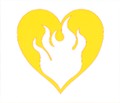
Pure Soul is the fifth released album from the Japanese rock band Glay. The album was a slight departure from the rock and power ballad sound the band sported with their previous albums. Pure Soul brought forth a faster alt-rock sound. The album contains such hits as "Yuuwaku", "Soul Love", the concert classic "I'm in Love", and the title track "Pure Soul". The album peaked at #1 on Oricon charts and sold about 2,430,000. It was certified "Triple million" by the Recording Industry Association of Japan (RIAJ).
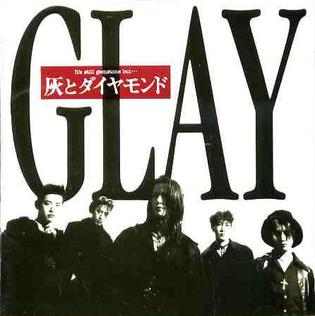
Hai to Diamond is the first album by the Japanese rock band Glay. It was released on May 25, 1994, by the independent label Extasy Records and peaked at #57 on the Oricon chart, with more than 51,000 copies sold.

The Beatles in Mono is a boxed set compilation comprising the remastered monaural recordings by the Beatles. The set was released on compact disc on 9 September 2009, the same day the remastered stereo recordings and companion The Beatles were also released, along with The Beatles: Rock Band video game. The remastering project for both mono and stereo versions was led by EMI senior studio engineers Allan Rouse and Guy Massey.
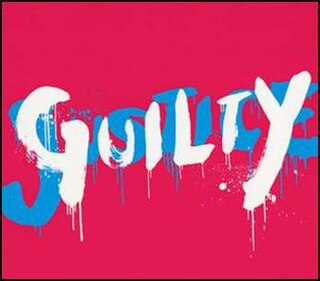
Guilty is the twelfth studio album by Japanese pop rock band Glay, released simultaneously with Justice on January 23, 2013. It reached #2 at Oricon charts, behind Justice only—the same happening at Billboard Japan Top Albums - and #89 at their 2013 year-end chart. Both albums mark the second release of the band under their own label Loversoul Music & Associates.

Footprint is the second solo album by American musician Gary Wright, released in 1971 on A&M Records. It contains "Stand for Our Rights", an anthem-like song calling for social unity that was issued as a single in advance of the album. Wright recorded the majority of Footprint in London with a large cast of musicians – including George Harrison, Hugh McCracken, Alan White, Klaus Voormann, Jim Gordon, Jim Keltner and Bobby Keys – many of whom, like Wright, had played on Harrison's All Things Must Pass triple album in 1970. Harrison's contributions included an uncredited role as producer, and serve as an example of his support for Wright during the early stages of Harrison's solo career. The ballad "Love to Survive" is one of three tracks that feature an orchestral arrangement by John Barham.

"Orphans no Namida" is a song recorded by Japanese singer Misia. It was released on 25 November 2015 by Ariola Japan as the fifth and final single from her twelfth studio album, Love Bebop (2016). Misia wrote the lyrics and Shirō Sagisu composed, arranged and produced the track. "Orphans no Namida" serves as the first ending theme to the 2015 anime series Mobile Suit Gundam: Iron-Blooded Orphans. In commemoration of the 70th postwar broadcast, Misia performed the album version of "Orphans no Namida" at the 66th NHK Kōhaku Uta Gassen, live from the Nagasaki Peace Park.
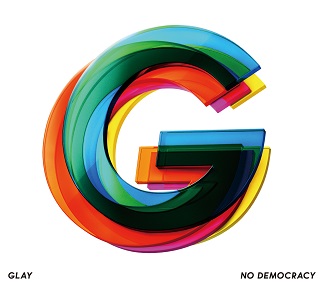
No Democracy is the fifteenth studio album by Japanese pop rock band Glay, released on 2 October 2019.

Revolver: Special Edition is an expanded reissue of the 1966 album Revolver by the English rock band the Beatles. It was released on 28 October 2022, and includes a new stereo remix of the album by Giles Martin, with the help of de-mixing technology developed by Peter Jackson's WingNut Films, as well as the original mono mix, session recordings, demos, and an EP including new mixes of the non-album single "Paperback Writer" and its B-side, "Rain", recorded during the Revolver sessions.